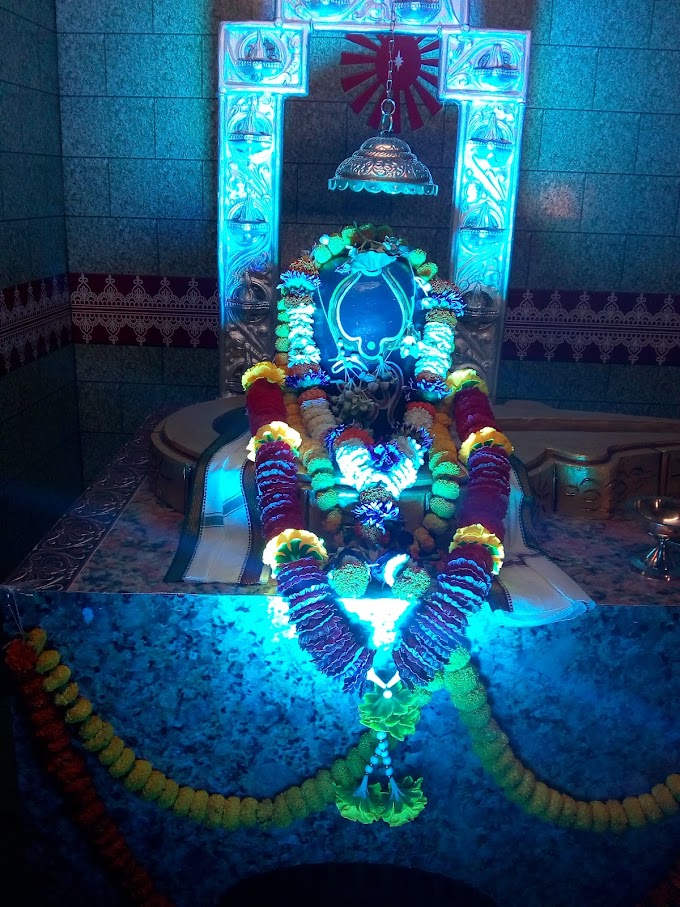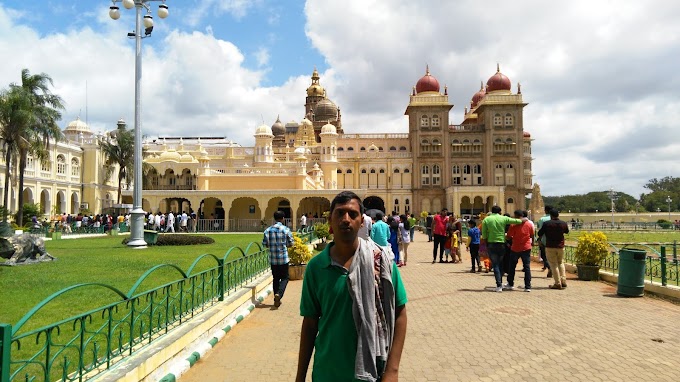Sanskrit is
an old Indo Aryan langyage. The most ancient documents are
the Vedas, which is
called Vedic Sanskrit. At the
time of ancient, Sanskrit language is commonly used and many books, scripts,
poetry etc are written in Sanskrit language. After so many year gradually other
languages emerge from Sanskrit language.
India is the mother of Sanskrit and till date the students are learning
Sanskrit from school day. The Sanskrit
is two type one of Vedic Sanskrit and another is Classical Sanskrit.
By Ancient Sanskrit we mean the oldest known form of Sanskrit.
The simple name 'Sanskrit' generally refers to Classical Sanskrit, which is a
later, fixed form that follows rules lay down by a grammarian around 400 BC.
Like Latin in the Middle Ages, Classical Sanskrit was a scholarly lingua franca
which had to be studied and mastered. Ancient Sanskrit was very different. It
was a natural, vernacular language, and has come down to us in a remarkable and
extensive body of poetry. (We have intentionally avoided the use of the
traditional word "Vedic" to describe the language of these poems for
reasons.
The Ashtadhyayi contains 3959 systematized rules that are
undiluted in brevity, full of wonderful analysis, explanation, and preferential
usage of the language and word formation. The language is so vast that it has
more than 250 words to describe rainfall, 67 words to describe water, and 65
words to describe earth, among other descriptions. This proves the magnanimity
of Sanskrit when compared with current modern languages. However, different the
sub-castes of Hinduism may be in their dialect, race, creed and rank, Sanskrit
is considered and accepted as the only sacred language giving rise to the only
available sacred literature by all, even though India has a repository of 5000
spoken languages. Panini was responsible for the standardization of the
language, which to this day remains in use in multiple forms. Sanskrit as a
spoken language is rare and is spoken in some regions in India, some even
claiming it as their first language, but it is proudly mentioned as one of the
14 original languages of India in its Constitution. It is largely used in
Carnatic music in the form of bhajans, shlokas, stotras, and kirtanas, all
indicating various hymns to the Gods, and songs and mantras of God worship.
Sanskrit in terms of its literary association is classified into two different periods, the Vedic and Classical. Vedic Sanskrit is found in the Vedas sacred texts, especially the Rig Veda, the Puranas, and the Upanishads, where the most original form of the language was used. The composition of the Vedas is traced to the period of 1000 to 500 BCE, until when Sanskrit had a vigorous tradition of being used consistently through oral communication. This early Sanskrit is rich in vocabulary, phonology, grammar, and syntax, which remains undiluted in its purity to this day. It consists of 52 letters in total, 16 vowels and 36 consonants. These 52 letters have never been tweaked or altered and are believed to have been constant since the beginning, thus making it the most perfect language for word formation and pronunciation.
A characteristic feature of Indo-European languages is the
variation of vowels in derivatives from a root. Found regularly in the verbal
system, it also occurs in nouns, as in sing, sang, sung, and also song. This
vowel variation is known as ablaut. Its occurrence in Sanskrit was recognized
by the ancient grammarians, who described it as 'strengthening' of the vowel.
The table shows how the simple vowel is strengthened. If you want to search for
a Sanskrit word without knowing its exact transliteration, go to section
"Sanskrit made easy" of the index page, which allows you to search
for words without knowing precise diacritics usage. For instance, search Vishnu,
Siva, or the grammarian Panini. This interface is limited for the moment to the
Sanskrit Heritage dictionary.
Sanskrit is not restricted to Hindu compositions. It has also
been used by Jaina and Buddhist scholars, the latter primarily Buddhists.
Further, Sanskrit is recognized in the constitution of India as both a
classical language and an official language and continues to be used in
scholarly, literary, and technical media, as well as in periodicals, radio,
television, and film.
All dictionaries contain translations that are misleading for
the Rigveda. With this caveat, the Sanskrit-English Dictionary by Monier
Monier-Williams, based on the seven-volume Sanskrit-Worterbuch by Otto Bohtlingk
and Rudolph Roth, is a work of great erudition. The most recent dictionary of
early Sanskrit, by the eminent linguist Manfred Mayrhofer, is useful for
presenting the Rigveda in its Indo-European context, and is distinguished by
the regular unwillingness of its author to accept traditional interpretations
without question.
The Sanskrit language has been the traditional means of
communication in Hinduism, Jainism, Buddhism, and Sikhism. Sanskrit literature
holds the privilege of being used in ancient poetry, drama, and sciences, as
well as religious and philosophical texts. The language is believed to have
been generated by observing the natural progression of sounds created in the
human mouth, thus considering sound as an important element of language
formation. This is one of the prime reasons why Sanskrit has been rich in
poetry and its expressive quality of bringing out the best meaning through
perfect sounds that are soothing to the human ear. Vedic Sanskrit also contains
abstract nouns and philosophical terms which are not to be found in any other
language. The consonants and vowels are flexible enough to be grouped together
to express nuanced ideas. In all, the language is like an endless ocean without
a base due to its reach, complexity, and hundreds of words to express a single
meaning or object.
This vast body of derivative material remains the subject of
extensive study by Ideologists. However, from the point of view of
understanding the earliest Sanskrit text - the Rigveda itself - it has always
been, and continues to be, crucially misleading.
For much of its history this body of poetry was passed down
orally. Even following the general introduction of writing, some time before
the 3rd century BC, there was a strong reluctance to write down this sacred and
cabalistic text, which was the exclusive and secret property of elite. The date
of the earliest written text that has come down to us, from which all others
derive, is characteristically unknown. It is a 'continuous' text - in Sanskrit, saṃ-hita 'placed-together' - in
which adjacent sounds combine with each other across word boundaries according
to strictly applied phonetic rules. This combining of sounds is known as
sandhi, from the Sanskrit saṃ-dhi 'placing-together'. A second ancient text,
the pada or 'word' text, which gives all the words separately in their original
form, appears to have been compiled at around the same time. The surviving
manuscripts of these two texts in the Devanagari script were edited and
published in a definitive edition by Max Müller in the second half of the
nineteenth century. It was clear to Max Müller that the 'continuous' text
obscured the original form of these poems. In 1869 he wrote, "if we try to
restore the original form of the Vedic hymns, we shall certainly arrive at some
kind of Pada text rather than at a Sanhita text; even in their present form, the original metre
and rhythm of the ancient hymns are far more perceptible when the words are
divided, than when we join them together throughout according to the rules of
Sandhi." But it was not until 1994 that the metrically restored text, in a
modern transliterated form, was published by the American scholars Barend van
Nooten and Gary Holland. For the first time in its history, the Rigveda was clearly
revealed, on the printed page, as poetry.
In its grammatical structure, Sanskrit is similar to other early
Indo-European languages such as Greek and Latin. It is an inflected language.
For instance, the Sanskrit nominal system—including nouns, pronouns, and
adjectives—has three genders (masculine, feminine, and neuter), three numbers
(singular, dual, and plural), and seven syntactic cases (nominative,
accusative, instrumental, dative, ablative, genitive, and locative), in
addition to a vocative. However, a full set of distinct forms occurs only in
the singular of masculine -a- stems of the type deva- ‘god’: nominative devas
(devaḥ before a pause), accusative devam, instrumental devena, dative devāya,
ablative devāt, genitive devasya, locative deve, and vocative deva.











